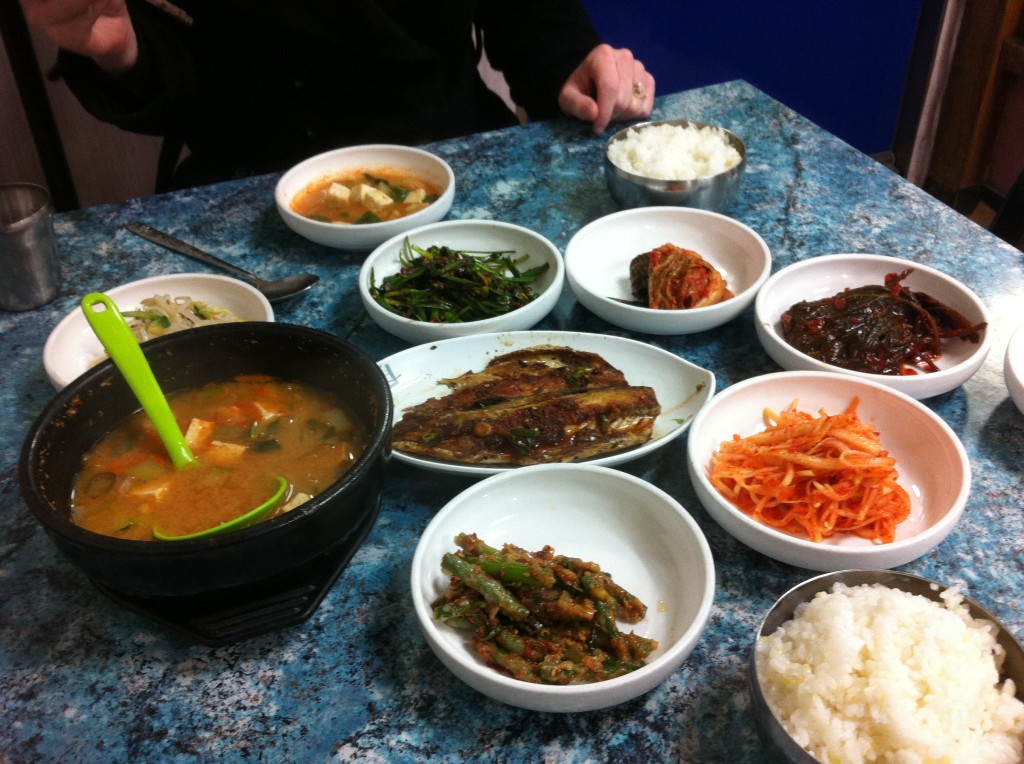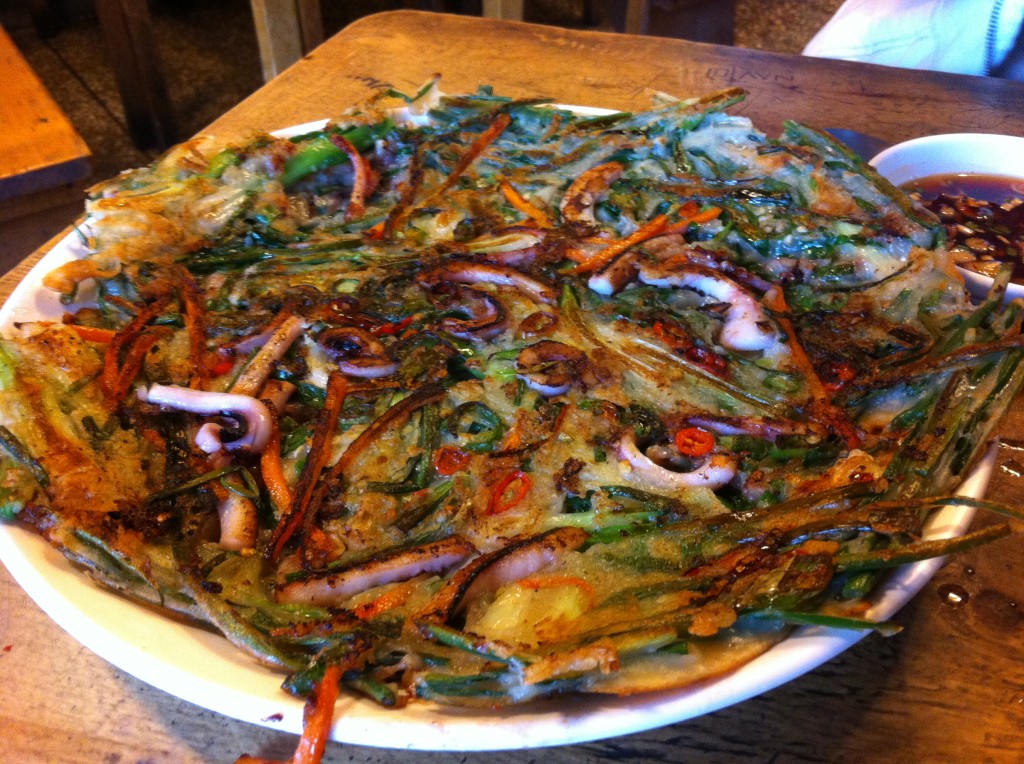So after covering Korean BBQ in my last post, I decided to go through a bunch of the other food we eat.
Stews (Jigae 찌개 in Korean) are popular and inexpensive dishes. Common types include Kimchi 김치 (fermented cabbage), Doenjang 된장 (soybean paste) and Soondooboo 순두부 (soft tofu).
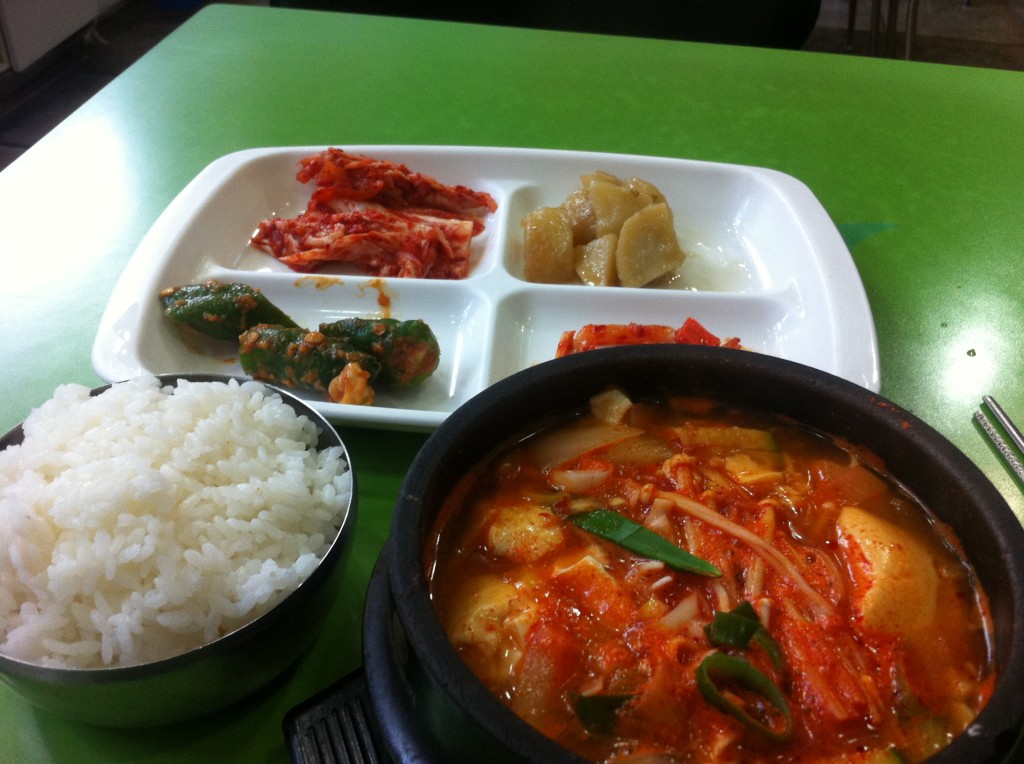
Also, notice all the side dishes called ‘banchan’ 반찬. These are typically some kind of seasoned or fermented vegetables. Also rice is almost always included. A meal without rice is not considered a complete meal in Korea. In fact, the Korean word for rice, bap 밥, also means ‘meal’ and a common greeting translates to ‘have you eaten (rice or meal)’
Here’s bibimbap 비빔밥. This is veggies, an egg and red pepper sauce piled on top of rice and traditionally served in a piping hot stone bowl (dolsot 돌솟). When it arrives to your table, you stir everything together.
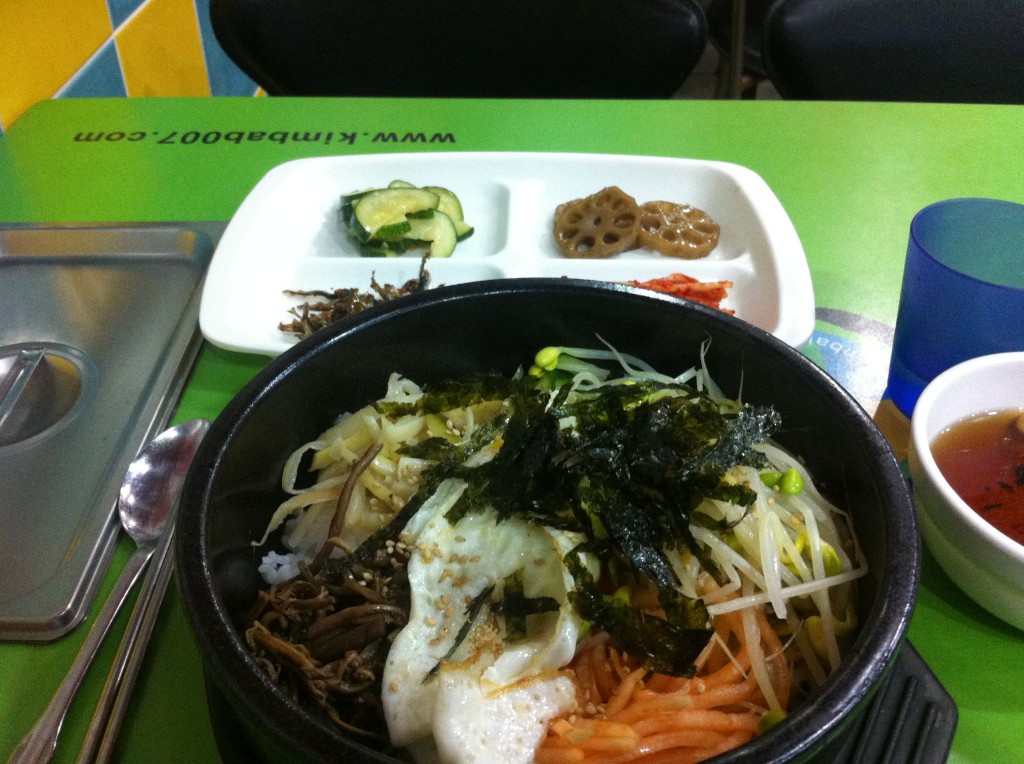
Below is a pic of Haejangguk 해장국 which literally translates to ‘hangover soup’. This is one of my favorite things to eat from a restaurant called Jomaru 조마루. It’s a chain but they specialize in this dish and it’s delicious. It contains pork backbone (some foreigners just call it ‘backbone soup’).
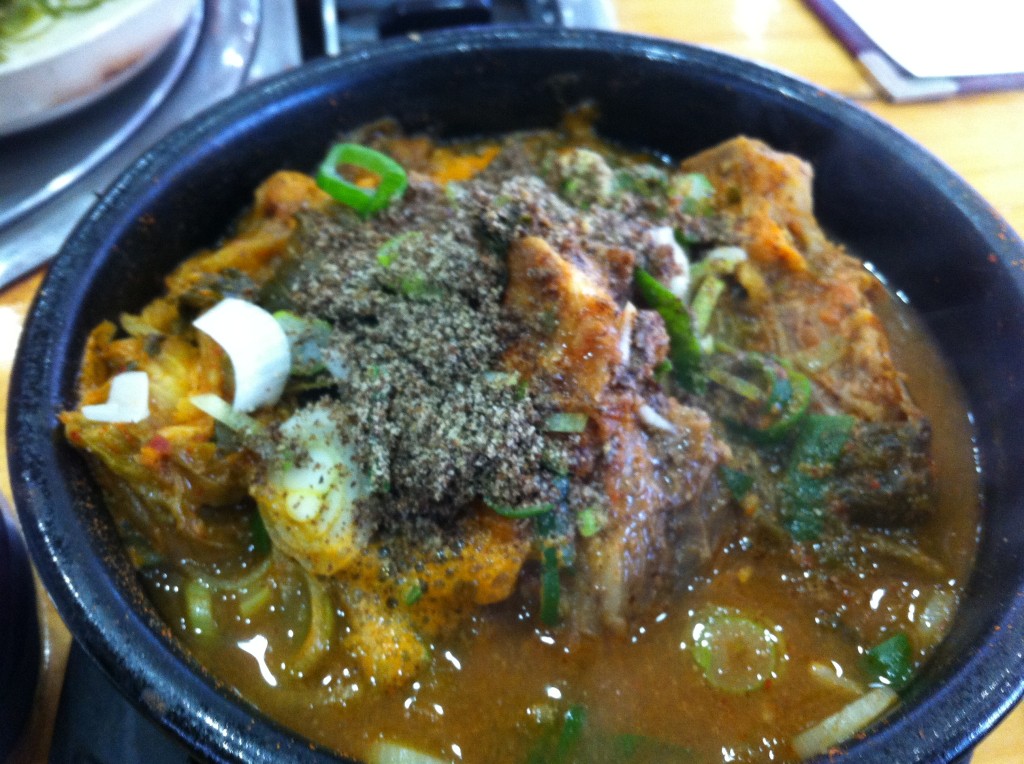
Pajeon 파전 is a kind of pancake that is made with green onions (this is what the ‘pa’ 파 in it’s name means). It can also include seafood or kimchi and, when done right, is fantastic!
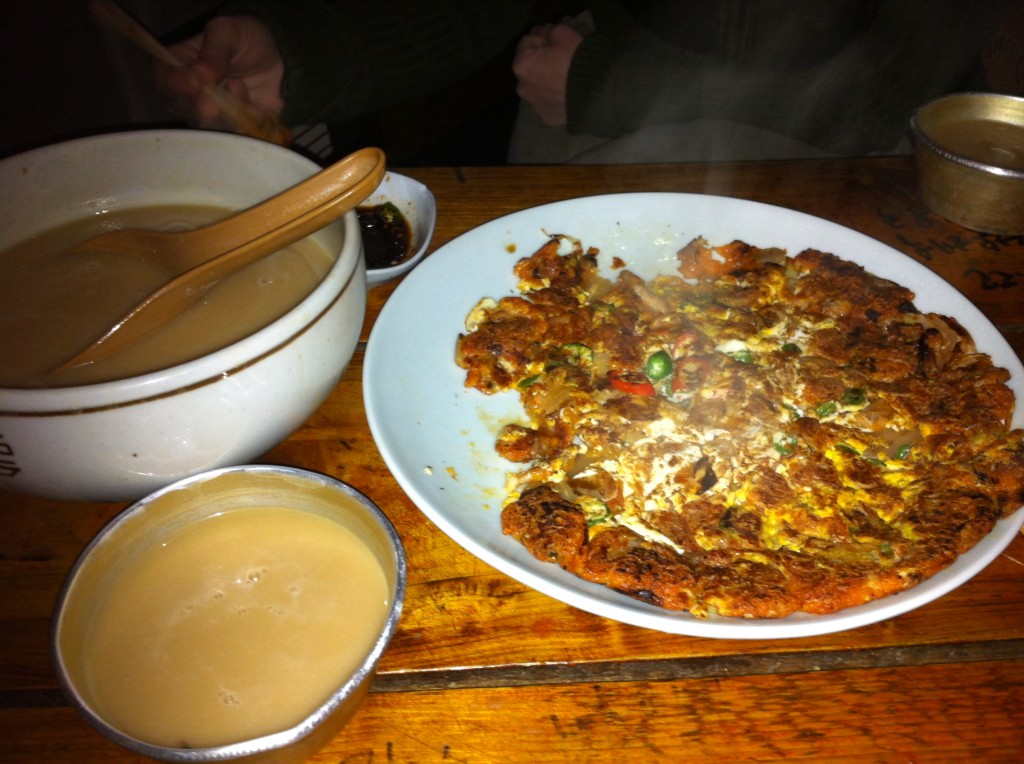 That bowl and cup of earthy, cloudy drink is dongdongju 동동주 which is very similar to makkeoli (an alcoholic, cloudy rice wine). Koreans feel that pajeon and dongdongju are harmonious together.
That bowl and cup of earthy, cloudy drink is dongdongju 동동주 which is very similar to makkeoli (an alcoholic, cloudy rice wine). Koreans feel that pajeon and dongdongju are harmonious together.


